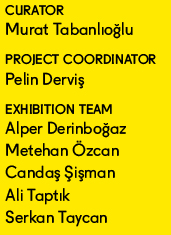

Memory is based on both personal experience and different representations of the building in a context. Once the construction is finished and people start interacting through the building it becomes something else. Layers of images like public and personal photographs form the memory of a building; it is not a singular building anymore
I like to deal with the memory of the user and memory as the representation of identity. Once you move into a house, you design and create the interior space both for your needs and representation of your identity. Even though we define the home as a private space, we can imagine it as the space of the role we assign ourselves in public space. The spatial design we create in our home, the furniture and objects we purchase, construct the definition of not only the person we are, but also the person we want to be
It is often social codes and the proposals of architectural culture that provide guidance for personal decisions.
Metehan Özcan
Excerpt from Places of Memory / Hafıza Mekanları (Istanbul: İKSV, 2014): 20-21
Metehan Özcan
Excerpt from Places of Memory / Hafıza Mekanları (Istanbul: İKSV, 2014): 20-21
Metehan Özcan
Recipes No 24, 2014
Installation of 85 archival pigment prints mounted on Sintra and a projection
Dimensions variable
A study based on life at Hukukçular Sitesia social housing project by architects Haluk Baysal and Melih Birsel (1958-1967). Decoration, changing scenery and objects of desire are represented by photographs of Özcan and some tenants.
Metehan Özcan
First Geographies, 2014
Projection
They brought you back home after you were born. The first forest you saw, once your eyes could make out things, was a pattern woven into a carpet. The first tree you sought shelter beneath was a coffee table.
Metehan Özcan
Excerpt from his work Made in Contact, Interior














